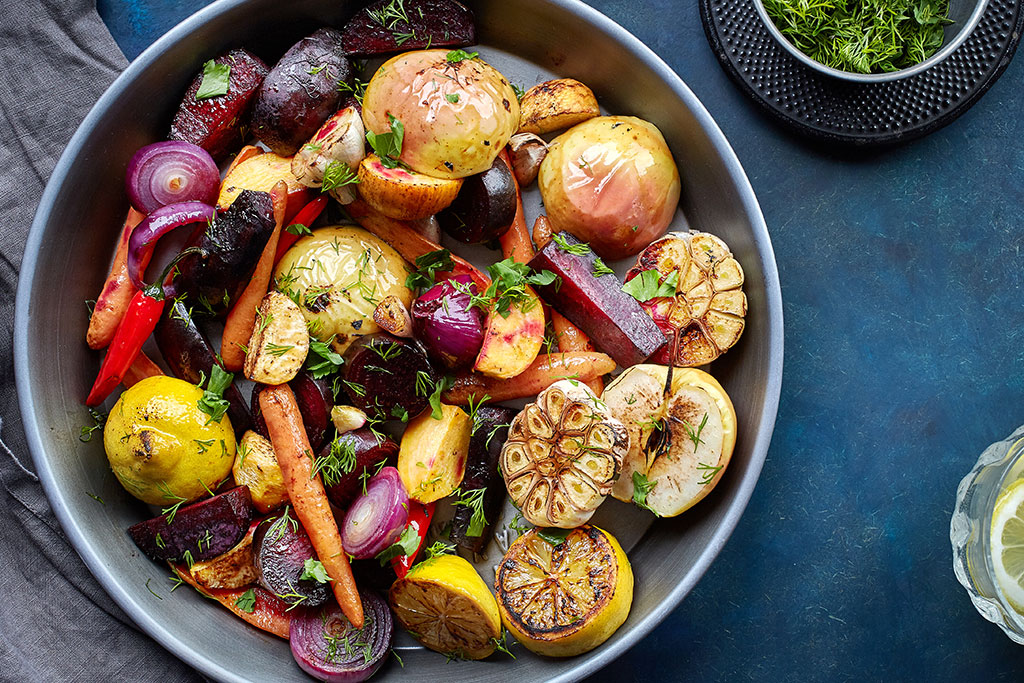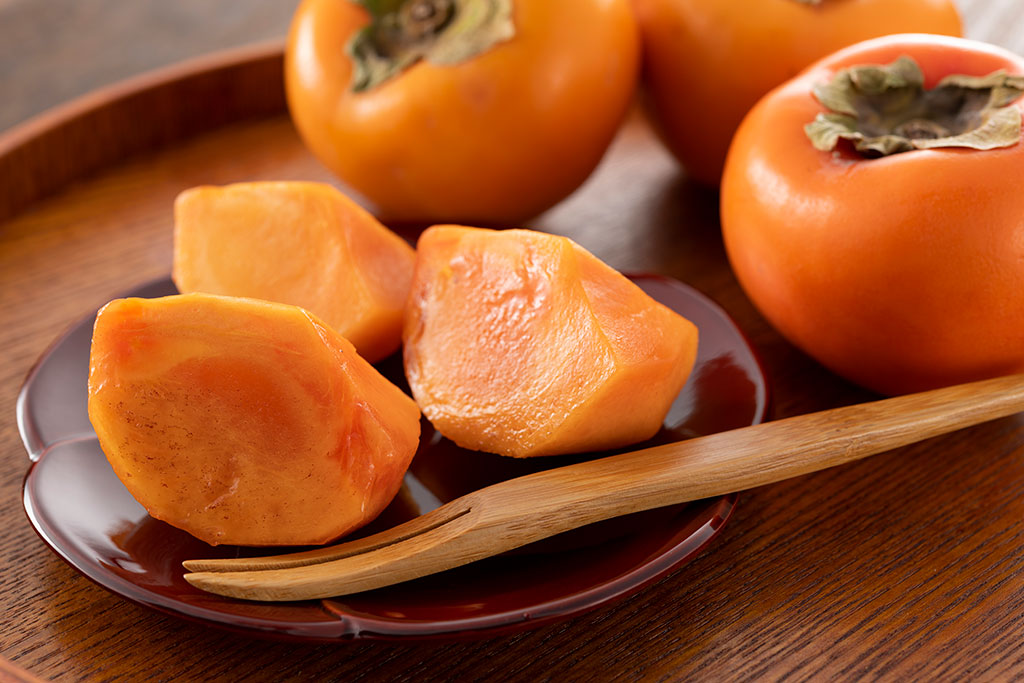How to Cook with These Uncommon Ingredients

The produce aisle of the grocery store presents a generous offering, and among the bounty are numerous seasonal options that many of us have never ventured to try.
Root vegetables like turnips and fruits like persimmons are plucked from the earth in winter so ripe and full of potential only to be passed by without a glance as shoppers beeline for their typical potatoes, tomatoes, and other staples of American home cooking. And yet these fresh finds conceal delicious and nourishing characteristics just waiting to be taken advantage of.
This February, show some overlooked or even unusual seasonal produce a bit of love. These intriguing ingredients offer unique flavor profiles that every home cook will want to add to their repertoire.
Turnips
The turnip is easily recognizable with its shooting-star silhouette and white or purple bulb that comes to a fine point. Given that this root veggie is a staple of many international dishes, including German and Chinese comfort foods, it’s surprising that it is largely ignored in the United States. Detractors often snub it for tasting bitter, but they simply may not have tried it cooked. The turnip’s dense body can withstand roasting, boiling, or frying, which evolves it into a soft, velvety, and delightfully palatable vegetable with a mildly sweet and nutty flavor.
Give the turnip its proper due with a veritable litany of recipe options. Grate it into a tasty breakfast hash, or pan-fry diced bites into crisp, delicious snacks. The popular home-cook blog Food Meanderings even recommends incorporating turnips into a dessert casserole since their gentle flavor is akin to apples when sweetened and baked.
For an even softer texture and milder flavor, try kohlrabi instead. A member of the cabbage family, this vegetable resembles a turnip, is also ripe in winter, and makes for a scrumptious substitute in any of the above recipes. (Its foreign name may impress discerning dinner guests as well.)

Rutabaga
This food belongs in the category of “words I’ve heard of yet never had images to associate them with.” The rutabaga is, in fact, a yellow-brown (and occasionally purplish) bulbous root with a clumsy shape, but behind its unappealing appearance is an earthy flavor often described as a combination of carrot, cabbage, and turnip. It takes well to both fatty ingredients and fresh herbs, so for a simple sampling of this underutilized veggie, peel, dice, and then toss it with butter, salt, pepper, and your choice of savory flavors like rosemary or chives. Conversely, this is one of the rare root veggies that’s also delicious raw thanks to its crisp and moist texture similar to an apple.
Ever the understudy, rutabaga is standing by ready to substitute for just about any other root vegetable under the sun. Try it mashed as an alternative to the classic potato side, roast it as you would carrots for a refined dinner accompaniment, or add julienne cuts to stews in place of onions for a bittersweet element.

Persimmons
It may look like the child of an orange and a tomato, but this fruit bears little resemblance to either on the palette. In fact, nothing else tastes quite like a persimmon, so you’ll just have to try this odd produce-aisle offering for yourself. It’s very tart and firm when underripe, but its flesh becomes sweet and almost pudding-like once perfectly ripened.
As with most fruits that fit in the palm of your hand, persimmons can be eaten raw as is or sliced and added to salads or parfaits to lend an inimitable, juicy sweetness. You could also bake this fruit into a tart for a unique dessert; it takes on subtle flavors of honey or pumpkin when cooked, depending on the variety, and pairs wonderfully with warm spices such as cinnamon, star anise, and nutmeg. However you munch on or prepare this fruit, you’ll find that its delicately sweet flavor has no substitute.

Chicory
If you happen to spot chicory in the produce aisle, you might balk at its gnarled roots and weed-like leaves that resemble ingredients in a witch’s brew. Passing it over would be a shame, though—this underutilized vegetable packs a splendidly potent flavor and offers enchanting potential in the kitchen.
Chicory’s peppery, somewhat bitter leaves wilt nicely without breaking down thanks to their dense fibers, but they can also be enjoyed raw in salads. The key is to treat them like kale, balancing their intensity with sweet, rich counterparts like vinaigrette dressings or buttery sauces.
As for the roots, they are primarily used to brew a morning beverage that has become popular in some circles, such as in Creole cafés and among health-food devotees. Bitter, bold, and black, a morning cup of brewed chicory root powder has a stimulating taste akin to coffee, though with a slightly nutty, almost caramel flavor. Its surging popularity can also be attributed to its health benefits, which include high fiber and prebiotics and a natural lack of caffeine. While you can certainly roast and powder your own chicory root, new converts to this coffee alternative should probably test it in packaged form first. You may very well fall in love with this underappreciated vegetable and make it a regular staple of your weekly shopping list.

15 Views



